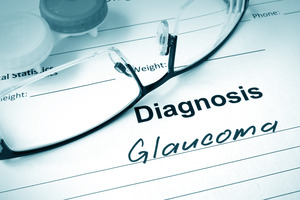
Glaucoma is the second leading cause of blindness worldwide, affecting more than 3 million Americans. What makes it especially dangerous is that it often develops without noticeable symptoms in its early stages, potentially causing irreversible eye damage before the individual is even aware of the problem.
To safeguard your vision, it’s important to understand glaucoma, its risk factors, and how it can be detected and treated. Here’s an overview of what you need to know about this serious eye condition.
What Is Glaucoma?
Glaucoma is a group of eye diseases that cause pressure to build up in certain parts of the eye, which can gradually damage the optic nerve. If not treated, this damage can eventually lead to permanent vision loss.
The exact cause of glaucoma isn’t always clear, but one major risk factor is the buildup of a fluid in the eye called aqueous humor. Normally, this fluid drains out through tiny mesh-like channels. However, if something blocks these channels, the fluid stays in the eye, creating too much pressure on the optic nerve and potentially leading to vision problems.
What are Possible Warning Signs of Glaucoma?
As mentioned earlier, glaucoma may not always cause noticeable symptoms in its early stages. However, there are several warning signs that may indicate the presence of the condition, including:
- Eye pain or pressure
- Headaches
- Red eyes
- Double vision
- Blurred vision
In more severe cases, certain symptoms may signal the need for immediate medical attention. These include sudden vision loss, bulging or enlarged eyes, and the sudden appearance of flashing lights. If you experience any of these symptoms, seek medical care as soon as possible.
What Can You Do About Glaucoma?
Detecting glaucoma in its early stages is crucial for preventing long-term vision loss. The most effective way to do this is by scheduling routine eye exams at least once a year. During these exams, your optometrist can perform specialized tests such as tonometry, which measures the pressure inside the eye to help detect glaucoma.
If you are diagnosed with glaucoma, your treatment will focus on reducing eye pressure to prevent further damage. This is often managed with prescription medications, but in some cases, surgical intervention may be necessary. Additional treatment options may be recommended depending on the type and severity of your condition.
In short, glaucoma is not a condition to take lightly. If you experience any symptoms or have concerns about your eye health, contact your optometrist as soon as possible. Early diagnosis and proper treatment are key to protecting your vision.
Glaucoma Treatment at Richmond Eye Experts
At Richmond Eye Experts, we take a proactive approach to diagnosing and managing glaucoma. During routine eye exams, we screen for early signs of the condition to ensure timely detection. For a more comprehensive assessment, we offer specialized glaucoma testing, including Optical Coherence Tomography (OCT), fundus photography, pachymetry, and gonioscopy. These advanced diagnostic tools allow us to evaluate eye pressure, assess optic nerve health, measure corneal thickness, and examine the eye’s drainage system. With early detection and personalized treatment plans, we strive to protect your vision and prevent further progression of glaucoma.
About the Author
Dr. Jordana Chettiparampil is a licensed Therapeutic Optometrist who works with children and adults alike. She is able to diagnose and treat a wide variety of eye diseases, including glaucoma. To schedule a consultation with Dr. Chettiparampil at Richmond Eye Experts, visit her website or call (832) 685-2020.

